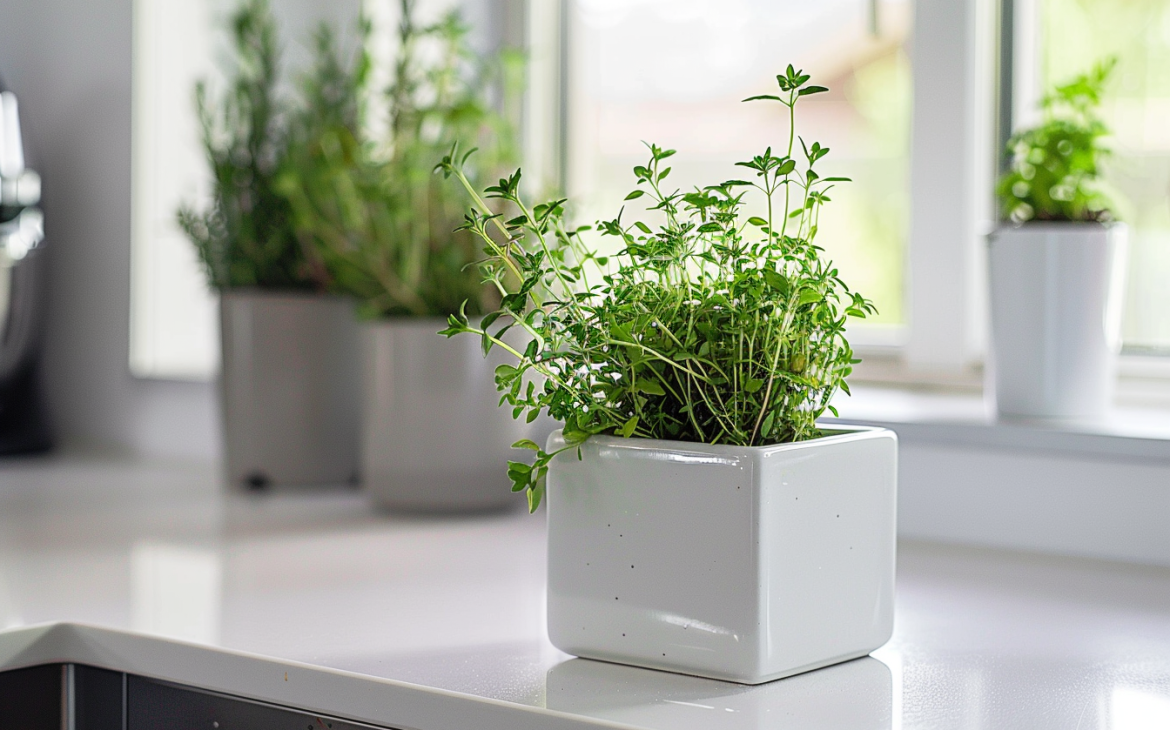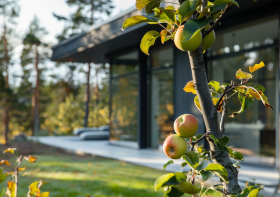Herb Garden Kitchens
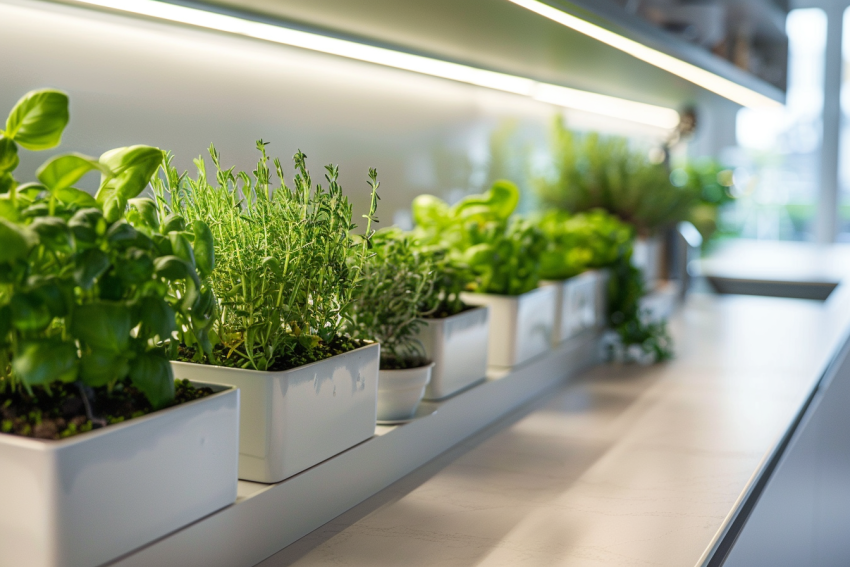
The integration of a kitchen herb garden brings not only vibrant flavors to your culinary creations but also adds a refreshing style to your home. Fresh herbs elevate the simplest dishes with a burst of freshness and can transform your kitchen into a more inviting, green space. Here are some tips on creating a functional and stylish kitchen herb garden that keeps fresh flavors at your fingertips.
Choosing the Right Spot
Sunlight is Key: Most herbs require about six hours of sunlight per day. Choose a sunny windowsill or an area near a window where they can bask in the sunshine. If natural light is limited, consider investing in grow lights to provide your herbs with the energy they need to thrive.
Temperature and Humidity: Herbs prefer moderate conditions, so aim to keep your kitchen’s temperature consistent and consider a small humidifier if your air is dry, especially in winter.
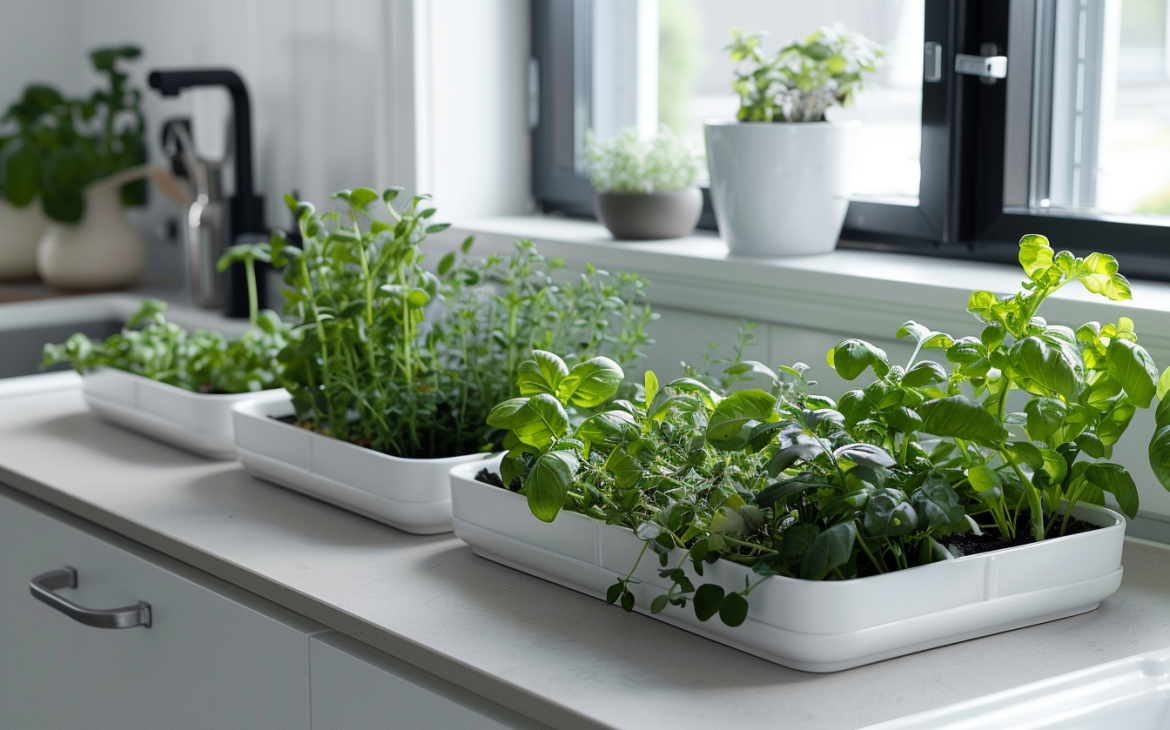
Selecting Your Herbs
Start with What You Use: Choose herbs that you commonly use in cooking. Basil, cilantro, parsley, thyme, and mint are popular for their versatility and ease of growth.
Understand Growth Habits: Some herbs, like mint, can be invasive and are best grown in their own pots to prevent them from overtaking other plants.
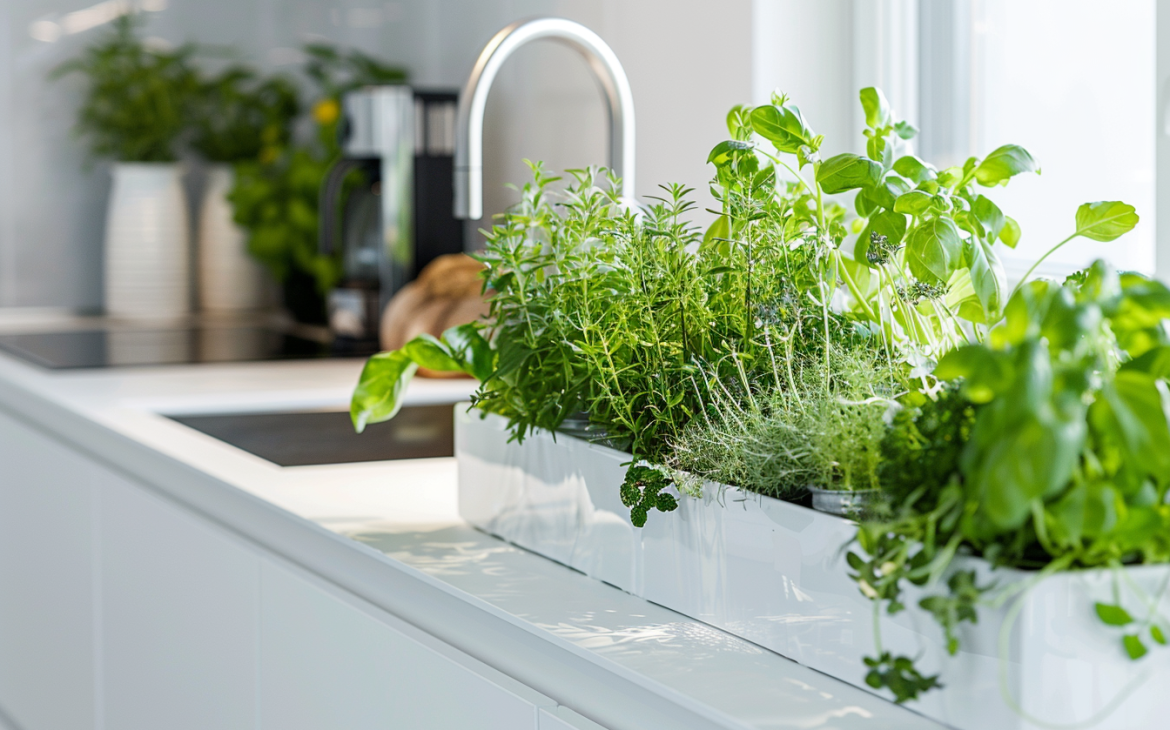
Container Choices
Drainage is Crucial: Ensure your containers have adequate drainage holes to prevent waterlogging, which can lead to root rot. Use saucers under pots to catch excess water.
Size Matters: Choose containers that are large enough to accommodate the growth of the roots but small enough to fit on your windowsill or designated area.
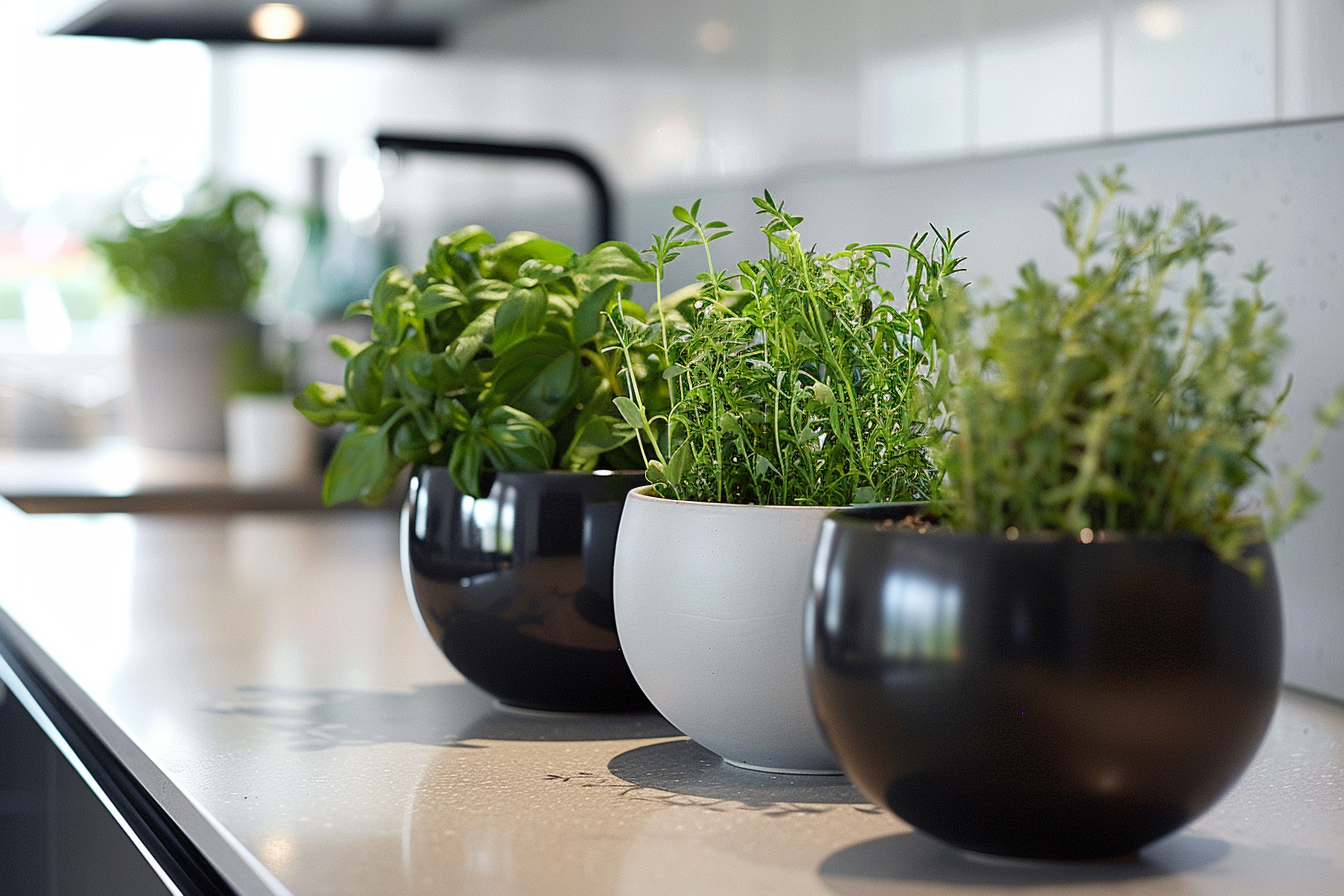
Soil and Watering
Use Quality Potting Mix: A high-quality potting mix designed for containers will provide the right balance of drainage and water retention.
Water Wisely: Herbs do not like to be overwatered. Check the top inch of the soil; if it’s dry, it’s time to water. Water thoroughly but infrequently to encourage strong root growth.
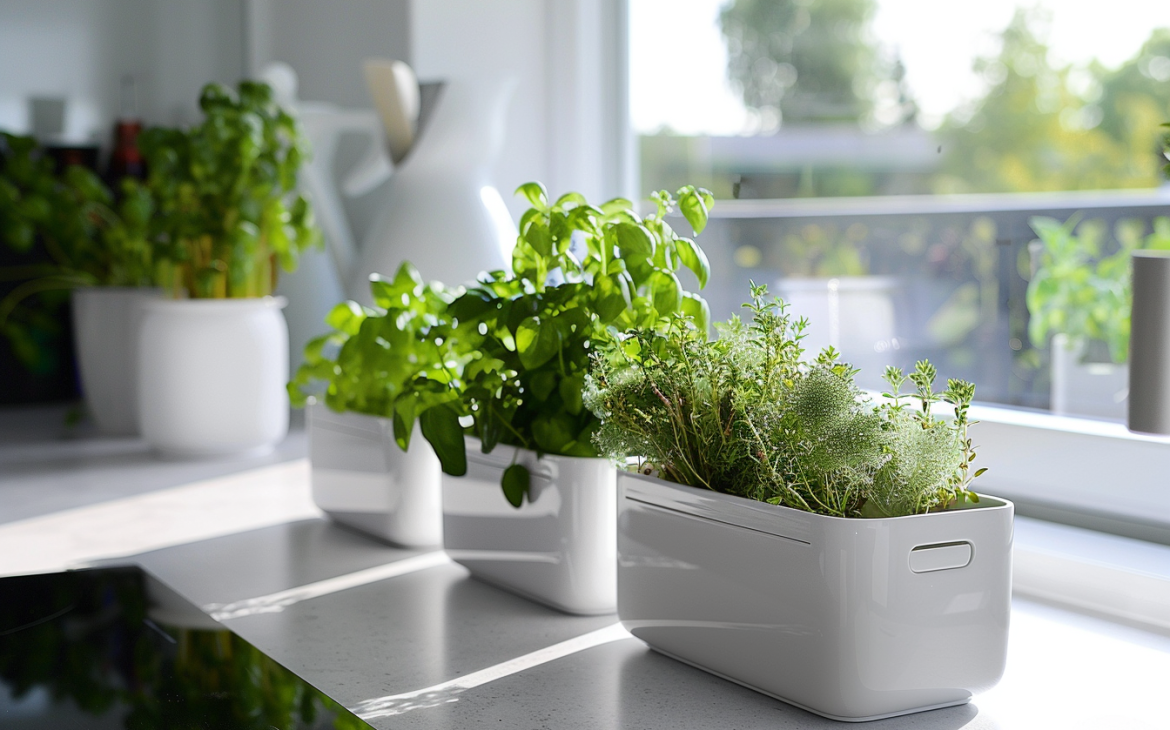
Fertilizing and Pruning
Fertilize Gently: Use a balanced, water-soluble fertilizer every four weeks during the growing season. Avoid over-fertilizing, which can harm the plants and diminish flavor.
Prune Regularly: Regular pruning promotes growth and prevents herbs from becoming leggy. Always snip above a leaf node to encourage new leaves to sprout.
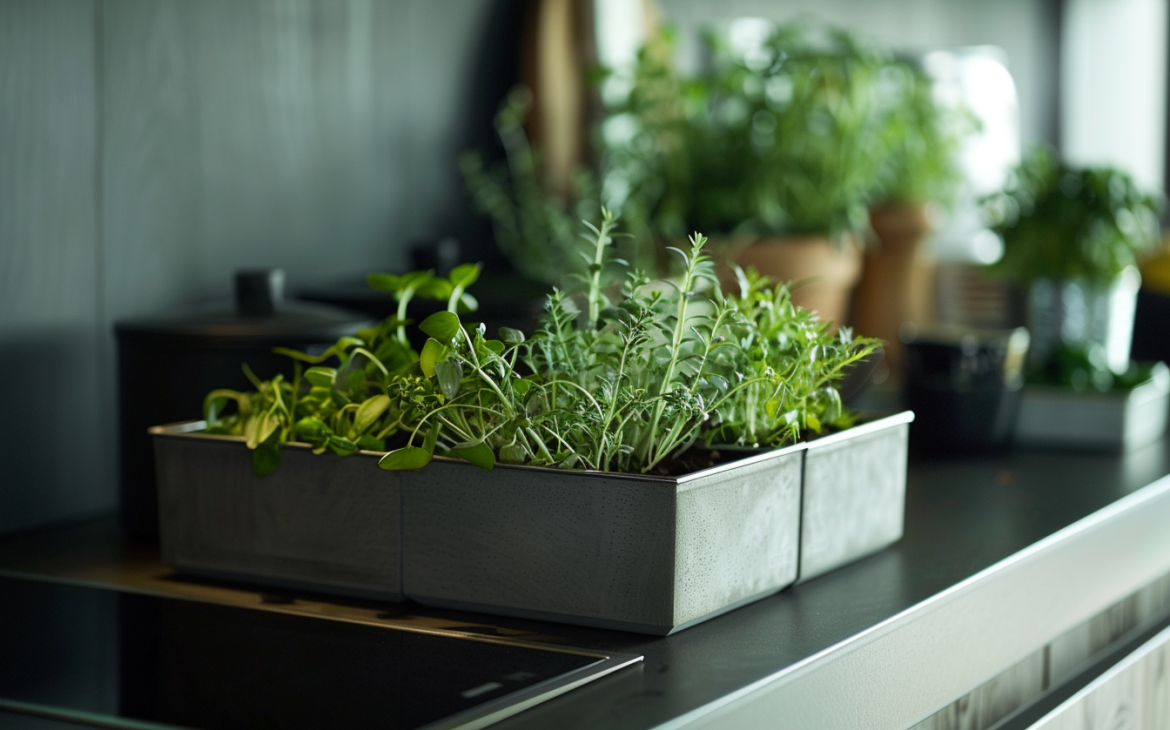
Styling Your Herb Garden
Label Creatively: Use attractive markers to label your herbs. You can use popsicle sticks, painted stones, or even small, written tags attached to the pots.
Add Some Flair: Coordinate the colors of your pots with your kitchen décor. Using uniform pots can give the space a clean, organized feel, while eclectic, colorful pots can add character and whimsy.
Vertical Gardens: If space is limited, consider a vertical garden or hanging planters, which can be both beautiful and space-efficient.
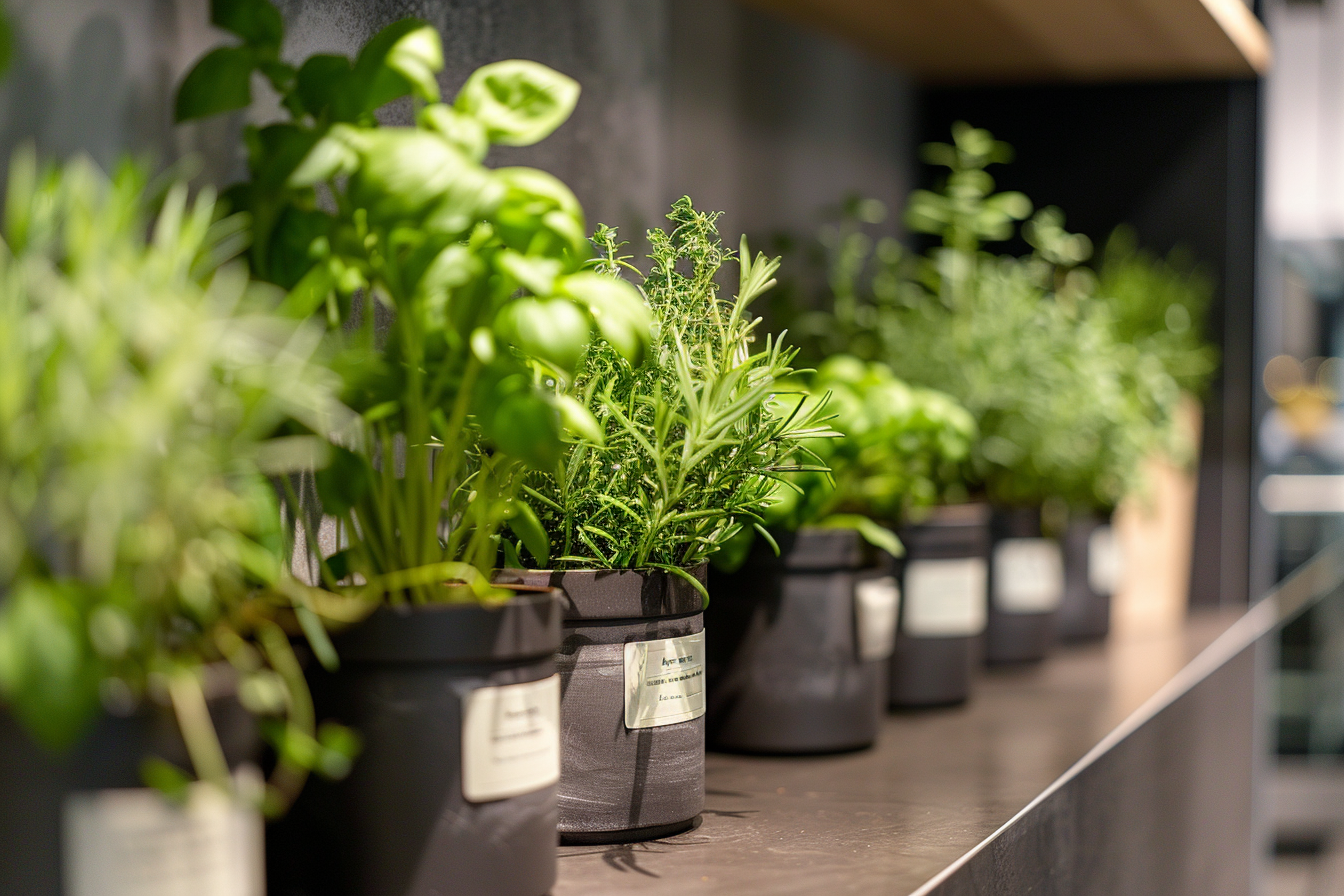
Creating a kitchen herb garden is a delightful way to bring freshness into your culinary routines and to add a lively touch to your kitchen’s aesthetic. With these tips, you can enjoy the dual benefits of flavor and style, ensuring that your cooking and your space are infused with the essence of freshness all year round.
To deepen your understanding of crafting unique and personalized spaces, consider acquiring my book, Basics of interior design, available on Amazon. This guide offers a comprehensive exploration of various design principles tailored to distinct environments, providing you with the knowledge and inspiration needed to transform any space.
